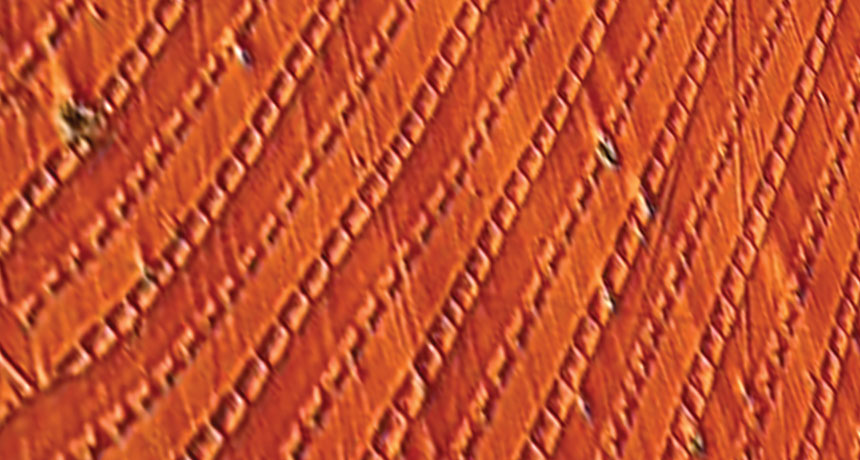Like a balloon, peculiar magnet grows and shrinks
Alloy of iron and gallium increases volume in a magnetic field

STRETCHY MAGNET Layers of roughly 40-micrometer-long magnetic cells inside an iron-gallium alloy, seen in this micrograph, enable the material to expand and contract in a magnetic field.
Courtesy of H. Chopra







